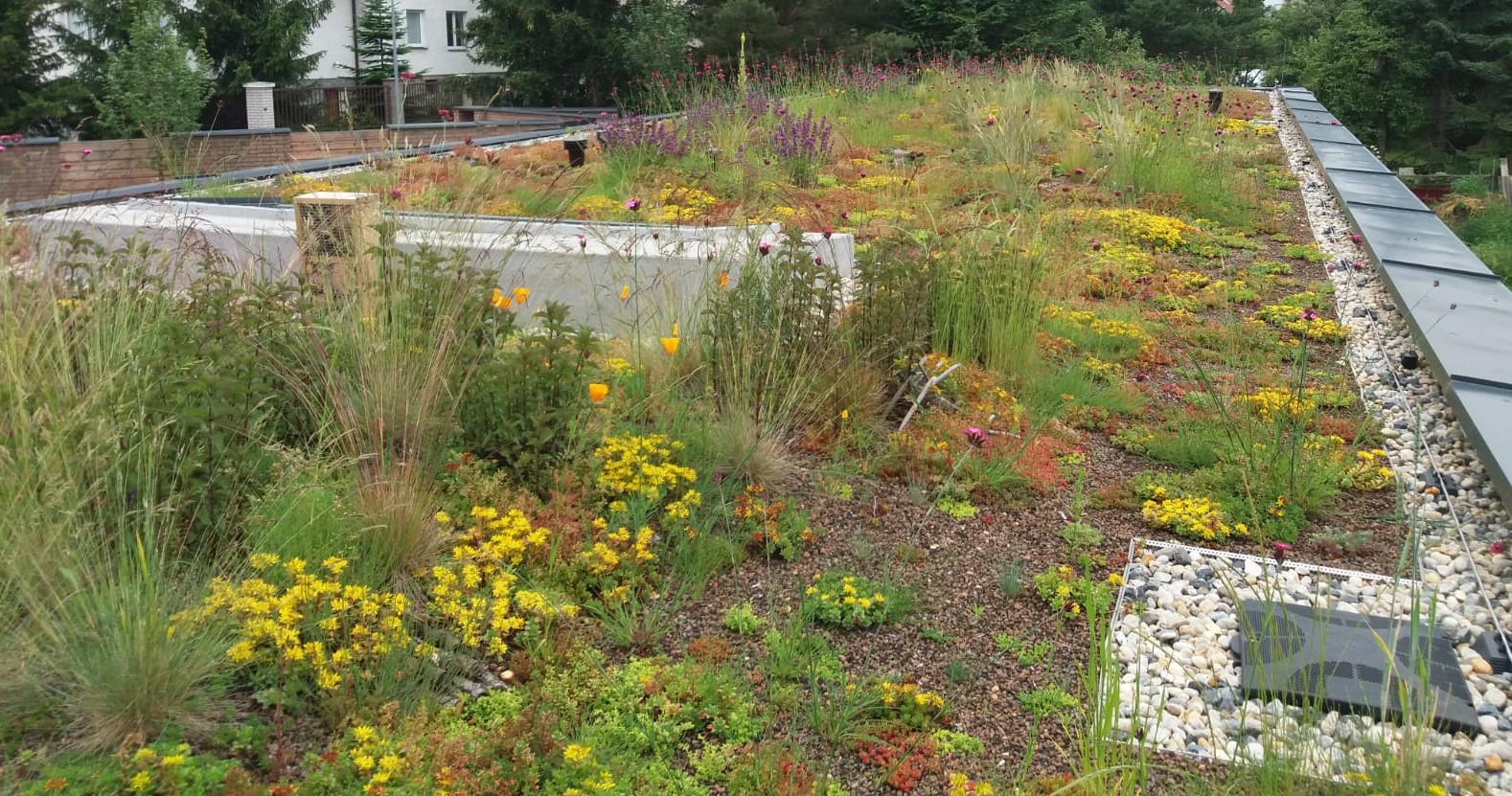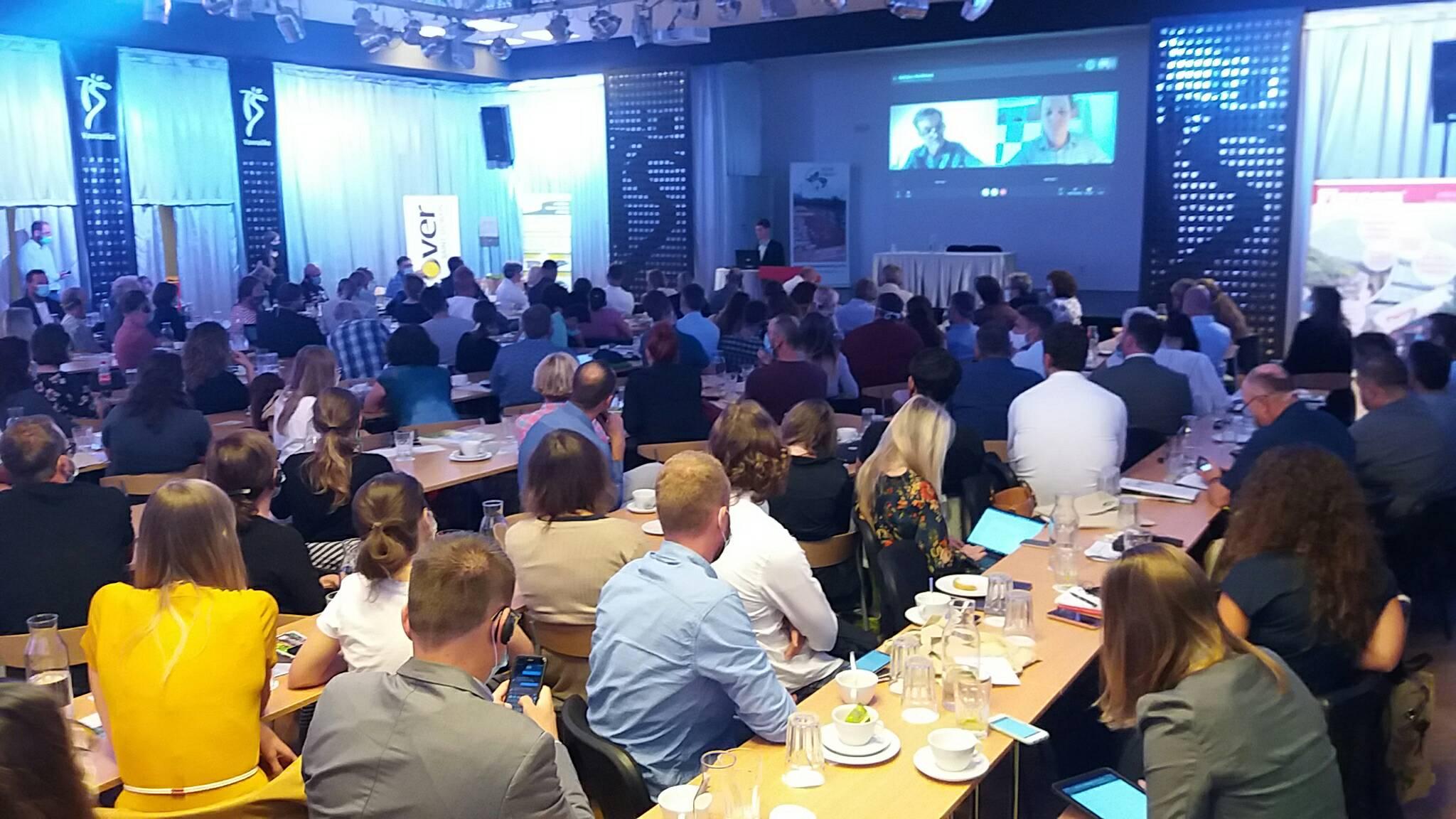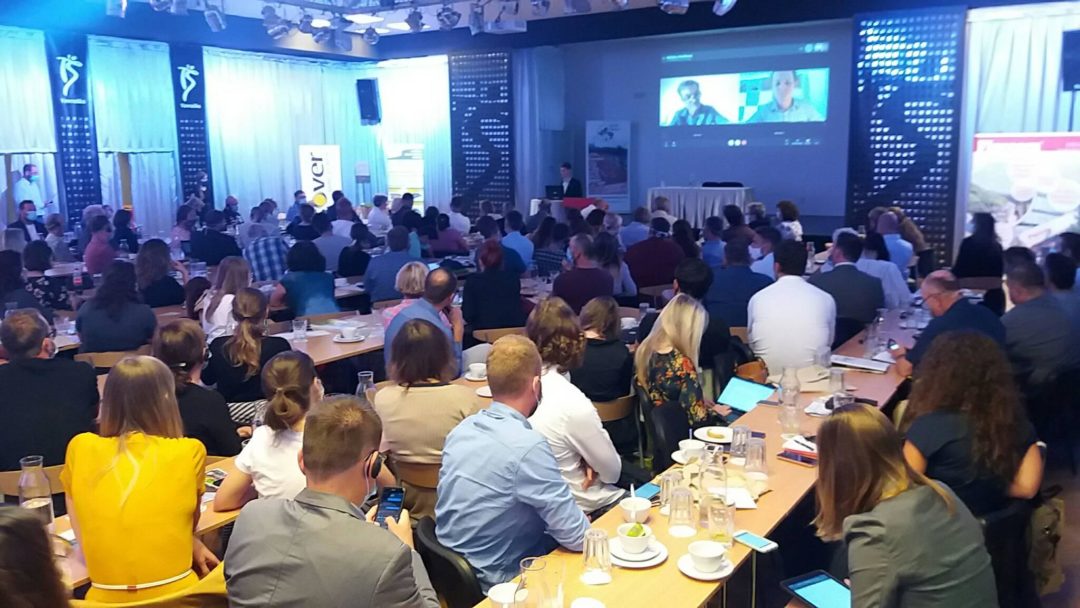Green Roofs – A Vision for the Future
Post-conference reflections

Experts from the United Kingdom, Portugal, Austria or Italy presented contemporary trends at a September conference called Green Roofs – A Vision for the Future, organized by the Czech Green Roof Association under the Czech Landscape Gardening Association on September 10, 2020. Despite the fact that the conference was somewhat affected by the coronavirus outbreak, it hosted almost 200 participants from the Czech Republic and abroad.
The event was introduced by Pavel Dostal, the Board Chairman of the Czech Green Roof Association who reflected back at the key milestones of the Czech green roof industry and revealed first glimpses of the Czech Green Market Report outlining industry gaps and trends. Pavel Dostal was then succeeded by the Czech Minister of Environment, Richard Brabec who briefly introduced the current legislative efforts regarding green roofs and stormwater management and reiterated his commitment to support both green and photovoltaic roofs in the Czech Republic.
Next, Dusty Gedge, president of the European Federation of Green Roof and Living Wall Associations, spoke about biodiverse and photovoltaic green roofs. Biodiverse green roofs are specifically designed to recreate the habitat that was lost when a building was erected, or even enhance it. Biodiverse green roofs are created using undulating substrate depths to suit both shallow and deep-rooted plants and then seeded with appropriate seed varieties. Photovoltaic (PV) green roofs also promote biodiversity and, what is more, improve the efficiency of solar panels. PV green roofs (biosolar) are thus one of the promising trends in the industry.
Michael Bates of Polypipe introduced the concept of blue-green roofs where water is stored under the vegetation buildup. Blue-green infrastructure challenges the traditional ‘collect – transport – release’ method of urban water management which fails to recognize the value of water and pushes problems downstream. Innovative sustainable drainage systems have been developed at rooftop level which mimic the response of nature by capturing rainwater where it falls and slowly releasing it into existing infrastructure. These roofs are called blue and blue-green roofs. Blue and blue-green roofs are becoming well established in Northern Europe as the commercial and environmental benefits of rooftop water management in dense urban sites. Will they also establish themselves in Central European conditions?

In the afternoon session, the conference shifted to Southern European topics. Maurizio Crasso, a geologist, member of the Aivep National Board of Directors – Italian Green Roofing Association and manager of Harpo group, drew the attention of the public to the specific climatic conditions of Italy, both northern and southern. There is no one-size-fits-all vegetation buildup – it is always climate dependent. Green roofs provide measurable performances which can be counted on when designing newbuilds and these performances can also be included in norms and standards.
Paulo Palha, vice-president of EFB, Board President of the Portuguese Green Roof Association and the general director of Neoturf, questioned the current practice of using plastic constituents in nature-based solutions. In Portugal, a research group, for three years, worked on this subject, seeking to find materials based on nature that could replace synthetic materials for green roofs. In the end, GUL appeared, an innovative system, totally natural, carbon-negative, 100% produced with cork, with amazing performance. The future can be, really, greener!
Moving back to Central Europe, Bernhard Scharf travelled from Vienna to speak about Living Walls. Recently ever new building integrated greening systems are being developed. They are traded as promising options to adapt cities to climate change impacts, improve attractiveness and quality of life. Being an integral part of a building’s facade, they do not need contact with soil and may be applied in any size at any height of a building. But do they really derive significant effects on a building and its surrounding microclimate? Bernhard Scharf, a researcher and lecturer at the University of Natural Resources and Life Sciences, Vienna and Construction Technical Director in Green4Cities, delivered an intriguing presentation which generated a lively discussion about where and how can green walls be used most effectively.
Speaking about effectivity and efficiency, Jan Macháč, researcher and manager of several research projects at the UJEP University and IEEP Institute, talked about cost-benefit approach to greenery on buildings. Based on a certified methodology for evaluating green and blue infrastructure in cities, the benefits of green roofs can be expressed in monetary units. The overall benefit of a roof can be one of the arguments for its implementation and from the point of view of economics, five key factors were presented. The difference in evaluation was demonstrated on selected examples of extensive roofs, e.g. according to the type of building, the investor, the location of the green roof on the building or the use of rainwater.
Lastly, Samuel Burian, a landscape architect, co-author of the Czech Green Roof Standards and a recognized expert, stressed that maintenance, conducted by qualified personnel, will ensure the initial establishment and continued health of a green roof system. When designing a green roof, it is important that the green roof system is specified with regard to any budgetary constraints. The costs of roof maintenance should therefore form a part of the life cycle cost analysis for the building, allowing the most appropriate green roof buildup to be installed.
by Pavel Dostal, Board Chairman of the Czech Green Roof Association, Vice-president of the EFB
Nov 2, 2020

